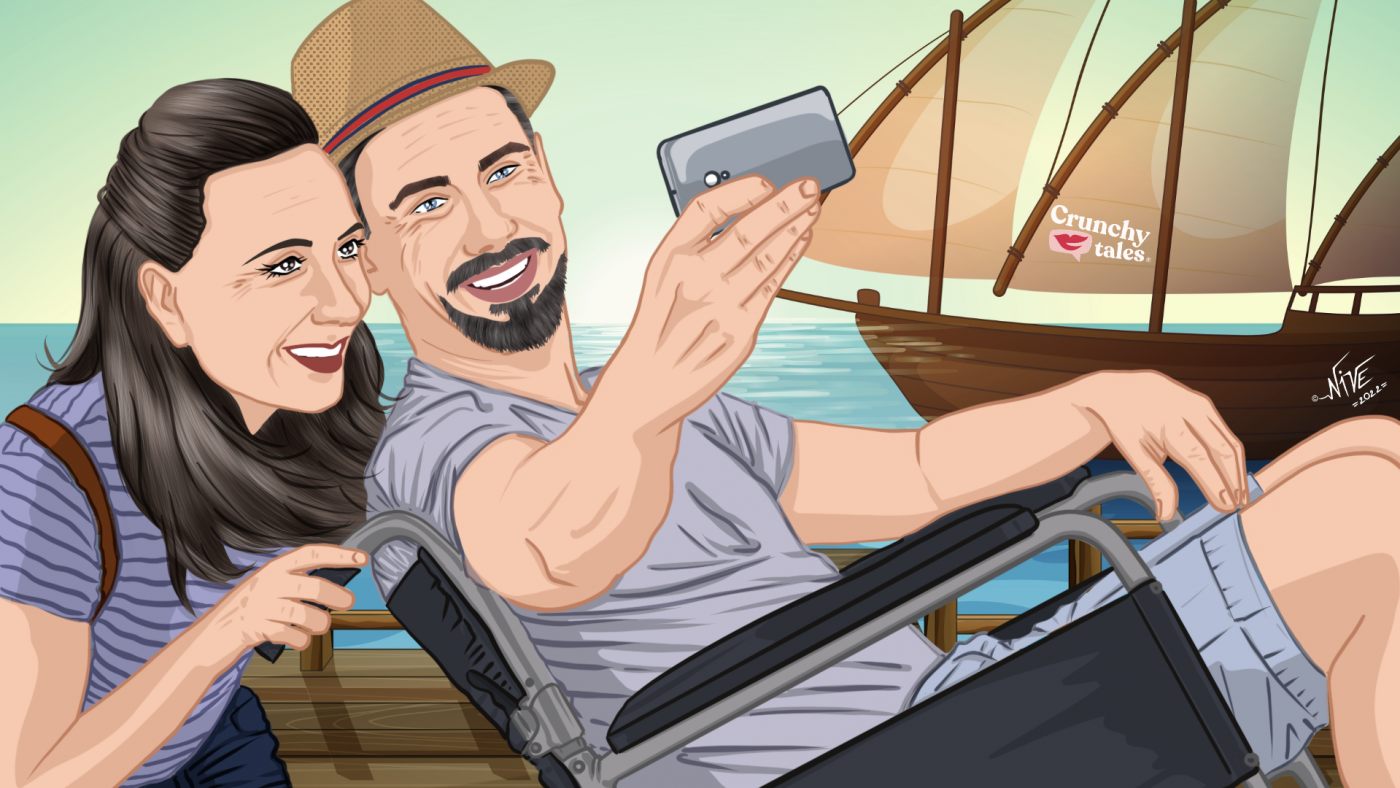Travelling With Disabilities: How To Plan A Smooth Trip
The travel industry certainly has a long way to go to make travel accessible for all. But still, that shouldn’t stop midlife people with disabilities to keep exploring the world on their own terms. Depending on the level of independence and how much assistance you need, with proper planning, you can still have fun.
Ideally, you should start small and work your way up to bigger trips: going on a weekend getaway to a nearby city first, will give you a chance to get familiar with what you need in terms of accessibility.
Whether you decide to book via a specialised agency or organise your solo trip adventure by yourself, here are a few things to take into account.
Plan ahead
There are plenty of resources online to better prepare you for travel. It can be useful to contact tourism offices and local transit providers before you travel. Some even include information on their websites about accessibility for people with disabilities.
The International Disability Alliance has some good links, but you can also contact your national organizations to see if they have a counterpart in your destination country – says Candy Carrington, founding editor of Emerging Horizons and the author of several best-selling guide books for disabled travellers to Women on the Road –. Mobility International can also be a good resource. Although they specialize in international exchanges for people with disabilities, they have a lot of good resources and information on their website useful to solo women travellers who are disabled.
Other sources of information are ENAT – European Network For Accessible Tourism (considered the world’s premier source of news, articles and information on accessible inclusive tourism for all), and Wheelchairtraveling.com, a website designed as a travel guide that features not only the basics, like how to get around and where to sleep but also ideas on attractions and activities, so you can plan a trip your way. You can also get a lot of insights from Facebook groups such as Accessible Travel Club.
Keep in mind that accessibility can mean different things in different countries. In some countries, people rely more on human-support systems than on physical or technological solutions.
Where To Go
To help you get started on your vacation planning, here’s our list of great disability-friendly places around the world.
- Barcelona
It is known as being one of the most wheelchair-friendly cities in Europe. With 80% of the metro stations and 100% of buses wheelchair-accessible, as well as a relatively flat and cobblestone-free old city, getting around here is easy. Furthermore, you will find several accessible beaches in the city. Some even offer volunteer assistance during the summer. Check out Turisme de Barcelona, a multilingual website dedicated to accessible travel for more information.
- Vienna, Austria
Like many European cities, Vienna is full of history, being the centre of the former Habsburg Empire and the musical heart of the Continent. The refurbished city is both flat and compact, with most central shops and cafes fully accessible. Getting around is relatively easy with elevators to the metro and plenty of low-floor trams. Most museums and places of interest are fully accessible: don’t miss the Gustav Klimt masterpieces at the Belvedere Palace and Museum, or the palaces of Schloss Schönbrunn and Hofburg.
- Oslo, Norway
The vast majority of attractions in the city are accessible (the Royal Palace is one of them), with discounts or free-entry tickets for people with disabilities to some of the city’s many museums. Public transportation is wheelchair-friendly and for the visually impaired, the city makes good use of tactile paving. There are also audible announcements at stations and on trains, and pedestrian crossings have audible signals.
- Singapore, Singapore
Singapore is amongst the most accessible cities in the world. It’s easy to get around there on a wheelchair, thanks to its efficient mass rail transit (MRT) system that’s fully accessible, barrier-free, comfortable and easy to use. Metro stations have priority elevators, tactile wayfinding, easy-to-follow signage, visual and audible indicators in elevators and on platforms, and wheelchair-accessible toilets. The entire fleet of public buses was upgraded to be wheelchair-accessible by 2020, with all bus stops already barrier-free. The vast majority of tourist attractions are fully accessible to people with disabilities and those with access needs, including the new Gardens by the Bay complex, which also provides a free shuttle service for wheelchair users and wheelchair rental. The Disabled People’s Association of Singapore is an excellent resource and includes links to many local disability-specific organizations, as well as a page dedicated to accessible Singapore for tourists.
- Las Vegas, USA
No doubt Las Vegas is one of the most accessible cities for people with disabilities in the US. Of course, the vast majority of sites and attractions, as well as the casinos and shows are all wheelchair accessible, many of which – like the Fountains of Bellagio and the Fremont Street Experience – are completely free. If you want to explore the area, Strip, a fully accessible bus service, serves all parts of the city, and when needed there are also plenty of wheelchair-friendly taxis.
- Orlando, USA
One of the best cities in central Florida by far for people with disabilities is Orlando. This city is the home of Walt Disney World and Universal Studios. For this reason, the city has worked extensively to make sure it is fully wheelchair-accessible for tourists. From nature experiences in the park to museums, there are plenty of things to do. And there’s an excellent trail nearby called the Orange Trail (Gatorland) that is popular with many adaptive organizations in the area for hand-cycling.
- Melbourne, Australia
With its well organised public transport system and compact and relatively flat city centre, Melbourne is top of the bucket list as the dream destination for travellers with disability. All major tourist attractions are wheel-chair friendly, including the Eureka Skydeck and the Melbourne Star Observation Wheel, while the Melbourne Museum has not only made accessibility a priority, it has also made sure it is autism- and sensory-friendly. Get ready to discover Melbourne’s best wheelchair-friendly restaurants, enjoy spectacular scenery along the Great Ocean Road, and one of the world’s best zoos in the world at your own pace by visiting Accessible Victoria And Melbourne website.
Tour Companies For Special Needs Travel
Every tourist has certain expectations about travelling and the destinations they choose to visit. Specialised accommodation and care packages are often the best solutions for disabled people who travel in a group. If you prefer a relaxed travel journey, take note of these tour companies and enjoy your trip.
Easy Access Travel specialises in accessible cruise vacations and packaged land tours for people with physical disabilities. Their goal is to research their clients’ vacation choices and to provide them with the necessary information to make their trip enjoyable and rewarding. To do so, the team spends time doing “hands-on” research: taking cruises, doing new ship inspections, visiting hotels and tourist spots in various cities and countries.
Wheel the World has quickly become one of the leading companies devoted to accessible tours for adults or seniors with mobility disabilities and wheelchair users. They offer accessible tours in more than a dozen countries, providing transportation and plenty of accessible things to do, including some pretty adventurous and epic experiences. With Wheel the World, you can explore Easter Island, Mexico or even go dune bashing in Qatar.
Travel for All has organized more than 5,000 vacations around the world for travellers with a variety of requirements, including cane users, slow walkers, hearing and vision impaired persons, travellers with complex health issues like dialysis and developmental disabilities, and wheelchair users. Every trip Travel for All plans comes with an accessibility specialist. Meticulous planning and great attention to detail are the keystones of keeping trips safe.
Like this post? Support Us or Sign up to our newsletter to get more articles like this delivered straight to your inbox!





